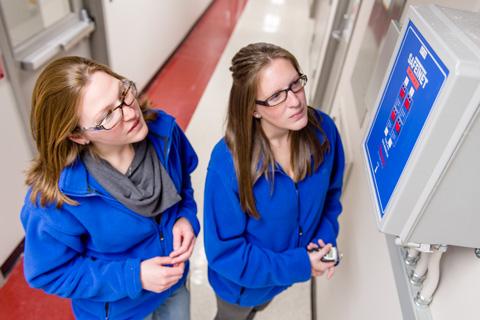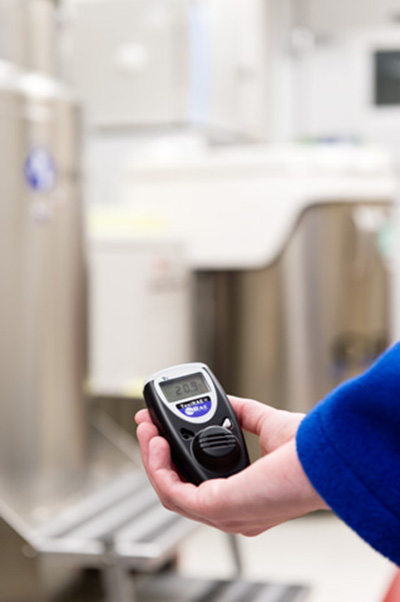A new system has been developed for reporting safety issues in the workplace. The Environment, Health, and Safety’s (EHS’) Safety Inspection and Issue Management System (SIIMS) is an online resource where any employee can report a problem or issue, said Siobhan Tierney, program manager at EHS.
“We had a clunky system with lots of paperwork, reports to file, forms to fill out, and we were not making enough use of technology,” Tierney said. “This is an automated way to create work orders and track work being done.”
SIIMS can pull data together from multiple sources, including work orders, property databases, and space management databases; the system “tracks everything,” Tierney said.
According to Sherry Shaner, secretary II at EHS, the difference between calling Safety versus the Facilities Maintenance and Engineering (FME) Trouble Desk is, for example, when you have a leaking faucet, you would call the Trouble Desk; when your faucet is overflowing and backed up, you would call the Trouble Desk to fix it, as well as Safety to do the cleanup.
“In the old system, you might call safety and they would tell you to call FME,” Shaner said. “With SIIMS, it’s one-stop shopping. You enter your problem once, and the system distributes it to the appropriate channels.”
Tierney said after reporting a problem, employees will be able to take more ownership of their report because they will be able to track their safety-related work orders through SIIMS instead of calling Safety multiple times for a status update. The status of all work orders can be tracked through FME’s website.
Safety processes related to issues used to consist of several pieces that were handled separately and manually, according to Terri Bray, director of EHS. The goal was to break down the pieces and integrate them into a fully transparent system. SIIMS brings together processes related to safety incident or issue reporting, safety inspection reporting, and safety deficiency tracking, and streamlines work so there is no duplication of effort.
Bray added that SIIMS is a tool to provide service and also to help employees manage safety in the lab.
For example, one key performance indicator is the goal of correcting a safety deficiency within 45 days. SIIMS is able to track the number of days it takes for Safety to respond.
The new system eliminates the need for pen and paper inspections of safety items. Now, using an iPad mini, information can be entered in real time; employees can take photos of the problem and add them to the system, and they can use voice recording to add to the report in order to, for example, identify specifically where a problem exists (i.e., where a noise is coming from).
Bray said the system is interactive and eliminates the previous lengthy processes for reporting problems. It now allows employees to achieve results through one process.
After a year of development, SIIMS was launched late last year. It was first tested on eyewash inspections last spring. The system was then used on annual inspections and animal inspections, all of which were previously reported in different databases using manual reports.
“SIIMS is open to all employees so they can see what’s going on; all issues are integrated, and you can track your own work orders,” Bray said. “We are trying to be transparent about the types of issues that exist [across the facility].”



